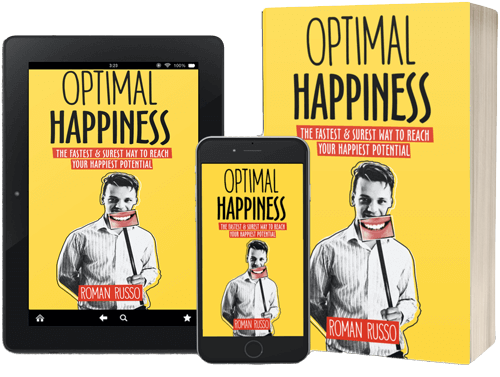
Another relatively common mistake people make in their pursuit of happiness (mostly women, but sometimes men, too) is giving more than they receive in their jobs, relationships, and other aspects of life. What they give and receive can be anything: time, money, energy, emotion, or anything else.
For example, in a relationship, one partner may initially give a lot of their time and energy, expecting the other to reciprocate. Sometimes this energy is reciprocated, and everything is fine. However, sometimes it is not, leading to a situation where one partner is giving more than they are receiving, which ultimately results in deep frustration, unhappiness, and burnout.
These relationships are often characterized by a lack of communication, with individuals expecting others to know what they want without having to express it and to do the right thing simply because they believe it is somehow obvious. Eventually, they may realize that their partner isn’t giving what they need to the point where the situation becomes unbearable.
At this point, they may either speak out—often loudly, suddenly, and unexpectedly, but ultimately incorrectly—or continue to remain silent until they experience emotional burnout. Many couples start to fight, break up, or seek outside help, such as couples therapy, while the real solution is simply being mindful of the give-and-receive dynamic and whether it is balanced.
Meanwhile, the other party is likely having a great time receiving. This is why, when the giving party finally complains, the receiving party can be taken completely off guard. After all, for them, everything was great, and they simply assumed that the giver was having as good a time giving as they were receiving.
And while the giver may have been happy to give, give, give, ultimately, they also wanted to receive, ideally in a 50/50 balance. This balance represents a natural state of equilibrium and, therefore, happiness for both parties.
It is worth noting that we all ultimately want to receive as much or more than what we give, without end, which is becoming progressively easier with advancements in technology, access to money, power, and intelligence, although this may take some work to set up.
This is also why many people don’t want to start relationships in the first place. They fear commitment, marked by the dynamics of giving and receiving and asking and taking. People are often afraid of the communication required in a healthy relationship, as it necessitates constantly trying to find a balance where everyone’s needs are met.
Of course, the reverse is also true, as people often seek relationships to gain something they cannot achieve on their own. This might include companionship, love, family, household assistance, financial resources, and other benefits. Naturally, in these situations individuals need to establish a balanced dynamic of giving and taking, as both being in a relationship and being alone can offer great benefits or pose significant challenges.
This dynamic results in different types of relationships, such as:
- Interdependent: The healthiest type of relationship as both individuals maintain their independence while also being connected and supportive of one another.
- Independent:This describes individuals who primarily rely on themselves. They value autonomy and self-sufficiency, often preferring to tackle challenges and make decisions independently, without relying on others. This isn’t to say that they prefer to be single, but rather that they are capable and willing to rely mainly on themselves to solve their problems and achieve their goals, without relying on others for these purposes.
- Dependent: Where one partner relies on the other for emotional, physical, financial, or otherwise support.
- Codependent: Defined by a mutual dependence on another person for emotional and psychological needs. Naturally, this is often considered the unhealthiest situation, as both partners may feel incomplete and thus rely on each other to enhance their well-being. This isn’t to say that this (or any other) relationship type cannot work. It’s just that it is much more challenging given its constraints.
- Counter-dependent: Characterized by an excessive avoidance of relying on others. Individuals with counter-dependent tendencies may have difficulty forming close relationships and often pride themselves on extreme self-reliance.
- Enmeshed: This describes a relationship dynamic where boundaries between individuals are blurred, leading to a lack of individuality and personal space. It often results in an unhealthy level of involvement in each other’s lives.
Understanding these terms can help in identifying and fostering healthy give and receive relationship dynamics, whether in personal, professional, or social contexts.
Of course, this isn’t always possible in all aspects of life. So, when a giver overgives, they often crash, burn out, or become upset about predominantly unilateral giving. In turn, they often do a complete 180, becoming a taker, which catches the original taker off guard as they are not ready or willing to give.
At this point, some people rethink their lives and, hopefully, fall into a normal 50/50 relationship of giving and receiving (or at least a more balanced one). Others may ultimately leave, breaking up the relationship and accusing the giver of being fake, as it seems like they changed their minds. The giver might have been too innocent, uneducated, shy, submissive, introverted, or simply not assertive enough to ask for or take what they really wanted.
Other areas of life where people should strive for an equilibrium of giving and taking, but often have problems, include:
- Relationships: As we have already discussed.
- Jobs: Hopefully, people are happy to exchange their time, energy, or other personal resources for a salary.
- Parenthood: Often, parents are required to give a lot to their children for years, hopefully receiving the happiness and joy that come with parenthood.
- Attachment Styles: Anxious vs. avoidant attachment, known as Attachment Theory, describes two opposing psychological polarities. The first is marked by a need for reassurance, fear of abandonment, and strong emotional highs and lows. The second desires independence, finds discomfort in closeness, and prefers emotional distance.
Interestingly, anxious individuals often start relationships with avoidant individuals, resulting in an unhealthy give-and-take dynamic. The anxious often give while the avoidant takes, or the anxious asks while the avoidant does not give. Happiness is found in healthy couples where people give and receive similar amounts.
Overall, this is pretty much all you need to know about giving and taking to find happiness. Adam Grant wrote an entire book called Give and Take about this interaction, which I recommend reading if you want to dive even deeper into this topic.
Still, in my experience, giving and taking is just one aspect of happiness. True happiness is found in the balance of multiple different aspects of life. So, if you really want to be happier and maximize your happiness today and forever, I recommend continuing to get familiar with my writing on this blog, books, and one-on-one coaching.
Stay balanced and happy!














